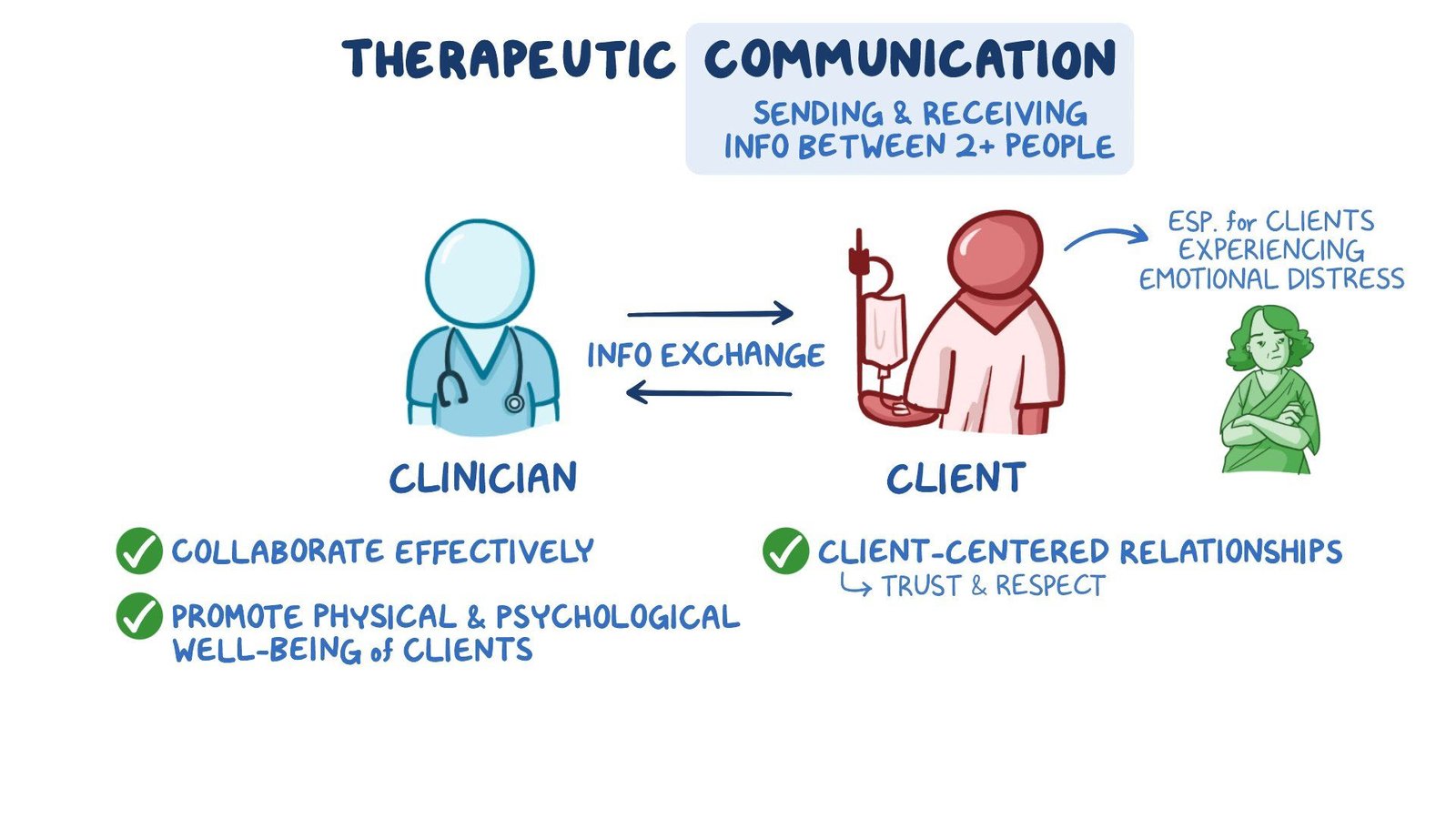Therapeutic communication – Nursing is a profession within the healthcare sector focused on the care of individuals, families, and communities so they may attain, maintain, or recover optimal health and quality of life. Nurses may be differentiated from other healthcare providers by their approach to patient care, training, and scope of practice. Nurses practice in many specialisms with differing levels of prescriber authority.
Many nurses provide care within the ordering scope of physicians, and this traditional role has shaped the public image of nurses as care providers. However, nurses are permitted by most jurisdictions to practice independently in a variety of settings depending on training level. In the postwar period, nurse education has undergone a process of diversification towards advanced and specialized credentials, and many of the traditional regulations and provider roles are changing.
Nurses develop a plan of care, working collaboratively with physicians, therapists, the patient, the patient’s family, and other team members, that focus on treating illness to improve quality of life. Nurses may help coordinate the patient care performed by other members of an interdisciplinary healthcare team such as therapists, medical practitioners, and dietitians. Nurses provide care both interdependently, for example, with physicians, and independently as nursing professionals.
Therapeutic communication
Definition of Therapeutic Communication:
Therapeutic communication is defined as “an interactive process between nurse and client that helps the client overcome temporary stress, to get along with other people, to adjust to the unalterable and to overcome psychological blocks which stand in the way of self-realizations”
Or
Therapeutic communication, sometimes called effective communication, is a purposeful and goal directed, creating a beneficial outcome for the client. The locus of the conversation is the client, clients problems, or the client’s need, not the problems or needs of the nurse.
Or
Therapeutic communication is the process in which the nurse consciously influences a client or helps the client to a better understanding through verbal or nonverbal communication. Therapeutic communication involves the use of specific strategies that encourage the patient to express feelings and ideas and that convey acceptance and respect.
Or
According to The American Nurses Association “Therapeutic communication is defined as the face-to- face process of interacting that focuses on advancing the physical and emotional well-being of a patient.

Function of Therapeutic Communication:
1. The nurse and client work together to solve problems centered on clients health care needs.
2. The family or significant others are includes in the care.
3. Health teaching is conducted.
4. Health promotion and prevention care is delivered.
5. To help clients learn about their illness and how to cope with it.
6. To comfort dying persons and assure them that someone is there to be with them and each there suffering.
7. To help makes illness bearable by reinforcing self-esteem.
8. To help makes supporting the mutual healing powers of a person
Principles of Therapeutic Communication:
1. The patient should be primary focus of the interaction.
2. A professional attitude set the tone of the therapeutic relationship.
3. Use of disclosure cautiously and only when the disclosure has a therapeutic purpose.
4. Avoid social relationships with the patient.
5. Maintain confidentiality
6. Assess the patient intellectual competence to determine the level of understanding
7. Implement interventions from a therapeutic base
8. Maintain a non-judgmental attitude. Avoid making judgments about patient behavior and give advice.
9. Guide the patient to reinterpret his or her experience rationally.
Purpose of Therapeutic Communication:
1. To provide a safe place for the client.
2. To explore the meaning of the illness experiences.
3. To provide information.
4. To provide emotional support that each client needs.
5. To achieve maximum health and wellbeing.
6. For data collection from patient.
7. To improve relationships.
8. To develop trust.
9. To show caring
10. To understand the feelings and needs of the client.
Techniques of Therapeutic Communication
A. Active Listening
B. Asking Questions
C. Listening Responses
- Minimal Responses
- Clarification
- Restatement
- Paraphrasing
- Reflection
- Summarization
- Silence
- Touch
D. Verbal Responses
- Mirroring Depth (Response that encourage the client to explore feeling at a slightly deeper conversation.
- Matching response with verbal content
- Using appropriate vocabulary
- Focusing
- Reframing situation
- Presenting reality
- Sharing Humor
- Confirming responses
- Giving feed back
- Asking for validation

Characteristics of Therapeutic Communication:
The nurse enters the relationship with a genuine desire to help others. An openness to experiencing the client a special and unique person worthy to personalized as well as professional attention and respect.
A. Clients-centered approach: By concerning each client’s perspectives and strengths, readiness to learn, way of relating to others, physical and emotional condition and socio-cultural norms.
B. Goal-directed: To help clients to cope with their illness, to comfort dying person and to assure them that someone is there to be with them and ease their suffering.
C. Rules and boundaries: Time limited and focused. Conversations between nurse and clients focus on specific health care needs, or health-related concerns.
D. Individualized strategies.

Read More…
